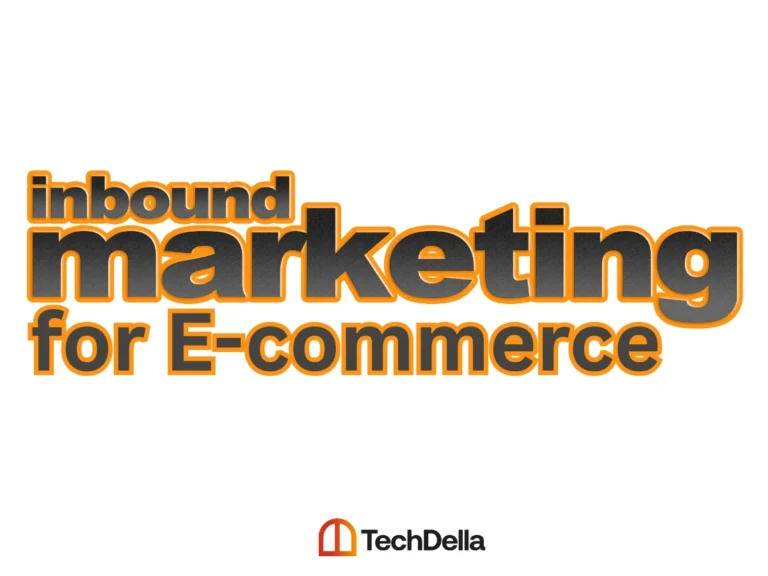
If you’re running an online store, then you need e-commerce SEO. It’s the best way to bridge the gap between where you are and where your customers are.
With e-commerce SEO you can increase your store’s visibility and attract the right people to your brand. Years of working with e-commerce brands have taught me one important thing—no SEO, no growth.
It may sound harsh but it’s the truth. Your online store needs SEO to thrive and I’ll be using this article to show you how to do that. Grab your pen, your notebook, and three cups of coffee because this will be a very detailed lesson.
P.S. If you want to increase visibility for your e-commerce store but don’t have the time to work on SEO, then an e-commerce SEO agency is your best solution.
You can skip through all the nitty-gritty and get right to enjoying the benefits of SEO. Let’s make that happen today!
What Is E-commerce SEO?
E-commerce SEO is the process of optimizing your online store to improve visibility and search rankings.
The goal is to attract high-intent traffic without paid ads. When someone searches for a keyword related to your store, you want your site to be the first one that pops up.
People are far more likely to buy from you when they know about your store. E-commerce SEO boosts visibility and helps you compete with bigger brands—even on a limited budget.

Why Your E-commerce Site Needs SEO
Let’s answer one simple question: Why e-commerce seo?
To that, I have five answers:
- It drives consistent organic traffic to your store.
- It’s one of the most one of the most cost-effective ways to acquire new customers.
- With it, you won’t have to depend on paid ads.
- It improves discoverability, builds trust, and increases conversion rates.
- It gives you a competitive edge.
Starting an e-commerce business online can be tough but with SEO, your store will become more visible to those that matter.
With that out of the way, let’s get into the best SEO strategies to help your brand rank high on Google.
Core E-commerce SEO Strategies for 2025 and Beyond
I’ve seen e-commerce businesses struggle and I’ve seen them thrive. Want to know what the ones who thrived had in common?
A solid e-commerce SEO strategy!
A well-planned e-commerce SEO strategy can position your brand as the go-to source in your niche. Let me show you how to do that:
- On-page SEO E-commerce
- Site Speed Optimization
- Mobile Responsiveness
- Crawlability and Indexation
- Site Architecture and Link Hierarchy
- Link Building
- Local SEO
I know that was a lot but trust me, these strategies are easier to implement than you think. Let me explain each one:
On-Page SEO E-commerce
On-page SEO refers to the strategies you implement on your website. These includes:
Product Page Optimization — Your product page is where the magic happens. It’s the last touch point before customers make a purchase so it has to convince them to go through with it. You need to optimize each product page with unique descriptions and targeted keywords. This leads me to my next point under on-page SEO.
Keyword Research — Finding and implementing relevant keywords is one of the most important parts of an SEO strategy. Targeted keywords bring customers to your page and a compelling description converts them.
Clean URLs — Google loves clean URLs and I always recommend giving Google what it loves. Keep your URLs clean and easy to understand for both humans and search engines.
Blogging — A blog is another great way to attract new customers. You can use your blog to support your e-commerce SEO efforts by targeting long-tail keywords customers are searching for.
There are several other e-commerce marketing strategies you can use to attract customers.
Site Speed Optimization
SEO for e-commerce brands also deals with the technical side of your website. I know you might be using an e-commerce platform but that doesn’t mean you can’t optimize for technical SEO.
The first step is to choose a platform that’s known to have good page speed. Let’s face it, all our attention spans are fried. No one in today’s world would spend up to a minute waiting for a site to load.
If it’s not up in seconds, they’ll go right back to the search results pages and choose another site. A site that loads slowly discourages visitors which means no traffic and certainly no sales.
There are many strategies for increasing e-commerce sales and a slow site is not one of them.
Not sure which platform is best for you? Check out this article that lists the best e-commerce platforms for small businesses.
Mobile Responsiveness
Most of your shoppers will browse through your website on their phones. This means you can’t afford to have poor mobile responsiveness. Your site should be optimized for both desktop and mobile.
Ignoring mobile is one of the most common SEO mistakes people make. Google loves its mobile users because most Google searches are done on phones. And remember the motto: Give Google what it loves!
Crawlability and Indexation
Without proper crawlability, even the best e-commerce SEO strategies will fall flat. Search engines like Google use bots to crawl and index your site’s content. These bots go through your website, figuring out what it’s about, learning its layout, and committing it to memory.
If the bots can’t access certain pages or don’t understand how your content is structured, those pages won’t appear in search results. This means you’ve lost the opportunity to rank for those pages.
Site Architecture and Link Hierarchy
Imagine a building in the early stages of development—each slab of cement, metal rods, wooden panels, and wires all coming together to form a building that stands the test of time. That’s what you want to do with your site’s architecture!
Just like a well-constructed building needs a solid framework, your e-commerce website needs one too. Each building block—link, page, image, and buttons should come together to form a great site.
Site architecture refers to the layout of your website. It describes how your pages are structured, linked, and categorized. A simple layout makes it easier for search engines and people to navigate your site.
Here’s what I would recommend to improve your site architecture and link hierarchy:
- Use a flat architecture where every important page is reachable within 3 clicks from the homepage.
- Group products into relevant categories and subcategories, using keyword-rich URLs.
- Create a clear internal linking system where category pages link to products, and products link back to their categories.
- Include consistent navigation menus across pages to reinforce hierarchy and improve crawl efficiency.

Link Building for E-commerce Stores
This strategy falls under off-page SEO which refers to SEO strategies that are not done on your website but still affect how it ranks. You might have noticed that it’s the opposite of on-page SEO.
People have often debated on-page vs off-page SEO with some saying that one is more important than the other.
My advice?
You need a combination of both to really succeed. Each strategy will only take you so far but together, you can dominate the competition.
Link building involves gaining backlinks from other sites in a bid to increase the authority of your website. High-quality backlinks tell Google that your site is trustworthy. You can gain backlinks through strategies like guest posting.
Local SEO Tips for E-commerce Brands
Local SEO for e-commerce is very important, especially if you have a physical store. With this strategy, you can drive traffic to your online store and people to your physical store. You’re winning on both storefronts!
Here’s how you do it:
- Optimize Your Google Business Profile
- Use Location-Specific Keywords
- Ask for Reviews from Local Customers
- Be Consistent Across all Platforms
Conducting an Effective E-commerce SEO Audit
Regular audits help ensure your e-commerce SEO strategy is aligned with SEO best practices. You can conduct an audit using our E-commerce SEO Checklist.
Tools to Use
E-commerce analytics tools help you keep track of your strategy. They help you figure out what’s working and what’s not. Here are some tools to check out:
Google Analytics — For tracking website traffic, user behavior, and conversion paths.
Google Search Console — For monitoring organic search performance and technical SEO issues.
Hotjar — Shows where users click, scroll, and drop off.
Shopify Analytics / WooCommerce Reports — These are specific to the platform so it will depend on which e-commerce website builder you choose.
And here’s a list of e-commerce marketing tools to help you attract, convert, and retain customers:
Klaviyo — For email and SMS marketing automation for e-commerce.
Mailchimp — For email marketing with automation workflows.
HubSpot — For customer relationship management and inbound marketing.
Ahrefs/SEMrush — These two function as both analytics and marketing tools. You can use them to check your site’s SEO performance and to conduct keyword research.
Key SEO Metrics to Track
If you don’t know which e-commerce metrics to track, then you won’t know how to measure success. Here are some key e-commerce SEO metrics to focus on:
- Organic Traffic — Traffic coming into your website from search engines.
- Keyword Rankings — How high your site ranks for certain keywords.
- Bounce Rate — The rate at which people are leaving your website. A high bounce rate shows that they didn’t find what they were looking for oka your website.
- Conversions — The rate at which website visitors are converting to customers.
Using Analytics to Drive Strategy Adjustments
Using data-driven SEO for strategy adjustments is a key strategy. When you review analytics you can uncover what’s working, and what needs to change.
This way you’re not guessing, you’re optimizing.
For example, let’s say your recent analytics showed that a product page had high traffic but low conversions. This may indicate weak copy, poor image quality, or a confusing checkout process. Optimize the product page and watch conversion rates rise!
E-commerce SEO FAQs
Final Thoughts
Launching a successful e-commerce startup takes work. But with the right marketing and SEO strategy, you can become a big player in your industry. Whether it’s fashion e-commerce or digital products, SEO will always be a great way to attract customers.
If you’re ready to take full advantage of SEO, then book a discovery call with Techdella. We offer incredible e-commerce SEO services to help you boost visibility and scale your business!
Related Marketing Strategies

The Advantages of Email Marketing for Holiday Promotions

Why Most Startups Don’t Have a Lead Problem (And What They Actually Need)


